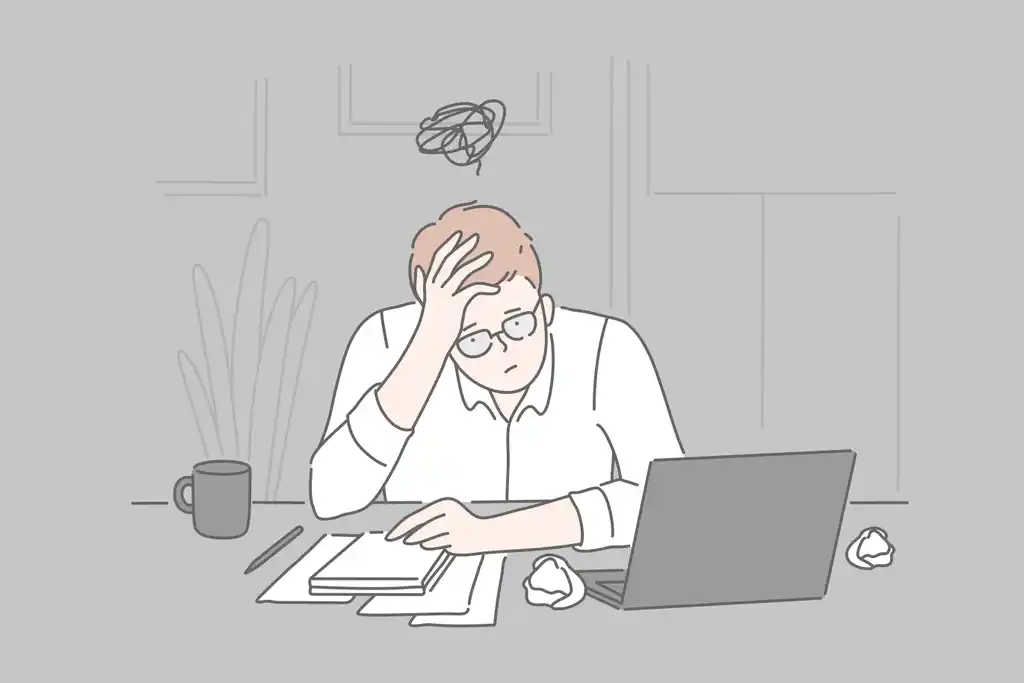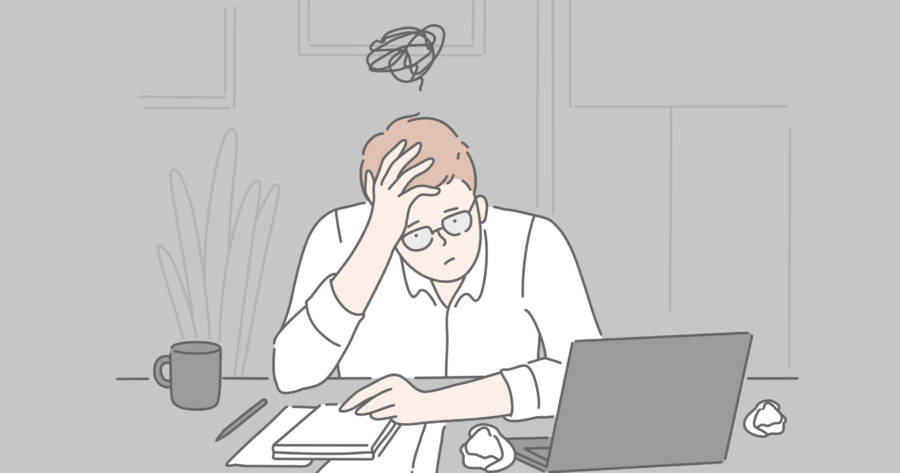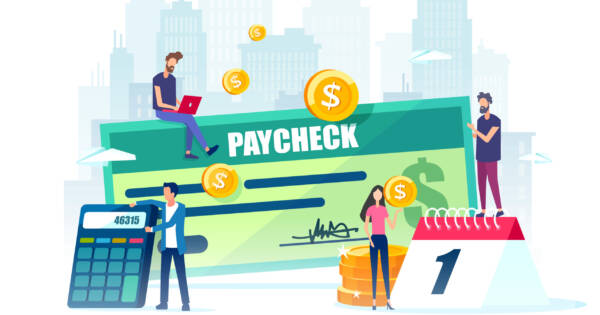Although it’s been more than a decade since the 2008 financial crisis, consumer debt has continued to climb at a record pace. Consumers have always taken on some level of debt to meet their financial goals, such as purchasing a house or investing in education. Unfortunately, factors such as declining wages and job security have led to a situation where the average household debt in Canada is now 163% of disposable income. For comparison, the ratio was just 66% in 1980.
All of this adds up to a situation where many people are saddled with so much debt, the idea of ever paying it off starts to feel unachievable. While living with debt is painful from a financial perspective, we all too often overlook (or at least minimize) the effect it can have on our emotional state. The longer you have debt, the more it will start to weigh on you mentally. This is when what’s known as debt fatigue sets in.
Debt fatigue can take different forms but it’s essentially a situation where the futility of your efforts to get out of debt cause you to stop caring or even give up altogether. It’s a terrible place to be and only adds to your financial problems. If you are currently experiencing debt fatigue, here are some helpful strategies to help you manage it and get back on track.
Make A Repayment Plan And Stick To It
Tackling debt without a plan is like trying to navigate a maze in the dark. Sure, you may make it out eventually but you’ll hit so many wrong turns on the way that you’ll want to give up long before reaching your destination. Becoming debt-free requires consistency above all else. Having a clear, actionable plan is the best way to achieve this. While there’s no one strategy to fit all situations, following one of the two listed methods below is a great place to start if you’re serious about beating debt fatigue.
Debt Avalanche
The debt avalanche method is designed to maximize the money you save on interest payments while eliminating debt. You focus on your debt with the highest interest rate first, while making minimum payments on everything else. Once the first debt is paid off, move on to the one with the next highest interest rate and so on until all debts are eliminated.
Debt Snowball
It’s easy to confuse the debt snowball and avalanche methods given their wintery names, but there are some key differences. Whereas the debt avalanche saves you money on interest, the debt snowball is designed to build motivation. It may actually be your best option if you’re experiencing debt fatigue.
Instead of focusing on high-interest debt, the snowball method involves paying off the smallest debts first before tackling the big ones. Although it won’t save you as much money in the long run as the debt avalanche, this method is a great way to get some quick wins early on.
Of course, creating a repayment plan can be quite difficult if you’re suffering from debt fatigue. Interest rates, repayment calculators, spreadsheets — it can all be overwhelming when you’re just starting out! The good news is you can make things much easier on yourself just by getting a little digital assistance…
Use An App
Once you have a repayment plan in place, you’re going to need a way to stick to it. Debt repayment apps are an excellent resource as they handle a lot of the legwork for you. For example, a service like Undebt.it takes all of your debt information and generates an easy-to-follow payment plan. The app handles calculations for you and provides up-to-date information on your payment history to help keep you motivated. This takes any guesswork out of the equation, as you’ll have a clear road map to a debt-free date in the future.
It’s all too easy to get overwhelmed by debt and feel fatigued by the whole process. Repayment apps — many of which are free —– can help you avoid this fatigue from ever setting in by making everything easy to understand and motivating from the start.
Celebrate Milestones
Having an aggressive repayment plan is a great strategy for handling debt fatigue. Unfortunately, focusing so much of your time and energy on your debt can come with an emotional cost. When you’ve framed your budget around paying off debt, it becomes all too easy to beat yourself up anytime you “slip up” by spending money on wants rather than needs.
Depriving yourself of simple pleasures can take its toll. Don’t be afraid of enjoying small splurges. Even more importantly, leave room in your budget to celebrate payoff milestones. Eliminating debt is a huge accomplishment and you should reward yourself appropriately, whether it’s going out for a nice dinner or taking in a sporting event. Just make sure you don’t go overboard and take on more debt while you celebrate!
Consolidate
The debt that truly holds us back is high-interest dues like credit cards and payday loans. When interest rates climb to 20% or higher, it becomes significantly harder to pay off because so much of your money is just going toward interest. If you’re carrying a large amount of high-interest debt, consolidation may be one of your best options for getting it under control.
Basically, debt consolidation involves obtaining a new loan with a lower interest rate and using it to pay off your outstanding high-interest debts. This way, you’ll not only put yourself in a position to pay off your debt faster thanks to a smaller overall interest rate, but it will all be combined into a single monthly payment.
In general, it’s best to avoid taking on more debt if you’re already drowning in it. If a consolidation loan won’t pay off your other financial obligations entirely, it could end up just adding to your debt pile. Under most circumstances, however, the pros of getting a debt consolidation far outweigh the cons. Especially if you’re on the verge of giving up. If you’re currently balancing several high-interest bills each month and are looking for some relief, consolidation could significantly reduce your debt fatigue.
Increase Your Income If Possible
One of the best ways to ramp up your debt repayment process — and thus, manage your debt fatigue — is to increase your payments. If you’re finding it difficult to come up with enough money to put a dent in your debt, it may be time to increase your income. The easiest way to do this is to pick up a side gig that doesn’t require a whole new skill set to take on. Adding even just a few hundred dollars in income to your budget each month can make a big difference, as all that extra money can be put directly toward debt.
The downside is if you already have a full-time job, adding more work hours onto your plate can erode other aspects of your life. If you do pick up a side gig, be mindful of your mental and physical health. Don’t be afraid to drop it if it becomes too much to handle. Viewing it as a temporary life adjustment can also help, as you shouldn’t feel obligated to continue with your side hustle after your debt is paid off.
Don’t Keep Your Struggles To Yourself
Shame can be a major contributor to debt fatigue, as we see it as a sign of failure or weakness in ourselves. First of all, this is not true. Go back and read the numbers at the beginning of this post, so you remember that debt is something millions of people struggle with. Unfortunately, being in debt can still be a deeply lonely experience because nobody wants to talk about it. While it can be frightening, sharing your struggles with a close friend or family member is actually one of the best things you can do to manage debt fatigue.
Having someone to confide in and who won’t pass judgment on your situation can help you gain confidence and support from an external source. Plus, you’ll have someone in your circle to keep you accountable as you continue paying down your debt. If you find yourself unable to talk to someone in your personal life, try posting about it anonymously on a financial support group’s message board. Odds are you’ll find both sympathetic ears and helpful advice!
 Shutterstock
Shutterstock







